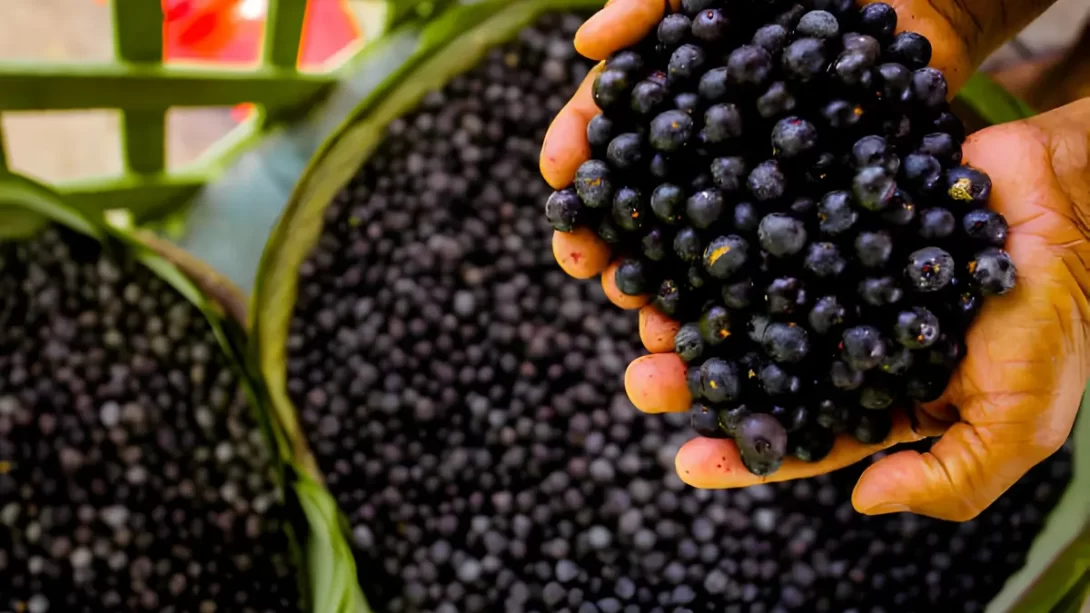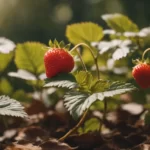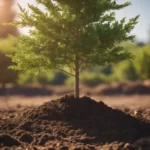The acai berry, a small, dark purple fruit, has gained international fame for its nutritional benefits and unique flavor. Originating from the rainforests of South America, this berry is harvested from the acai palm, known scientifically as Euterpe oleracea. This article delves into the natural habitat, cultivation practices, and global growth regions of acai, providing a comprehensive understanding of where this remarkable fruit originates and thrives.
Acai and Its Native Habitat
The acai palm is a slender, tall tree that can reach up to 25 meters in height, thriving in floodplain areas of the Amazon rainforest. This tree is notable for its ability to grow in wet, swampy conditions, which are prevalent in its native environment. The fruit it bears, the acai berry, is small and round, with a dark purple skin and a minimal amount of pulp surrounding a large seed. The native habitat of acai plays a crucial role in its growth, with the Amazon rainforest’s unique ecological and environmental conditions providing the ideal setting for these palms.
The Amazon Rainforest: The Heartland of Acai
The heartland of acai cultivation is the Amazon rainforest, specifically in countries like Brazil, Peru, and Colombia. This region offers the perfect combination of tropical climate, abundant rainfall, and fertile soil, creating an ideal environment for acai palms. These conditions facilitate the growth of acai palms in the wild, where they form an integral part of the rainforest ecosystem. Traditional harvesting methods in these areas are often sustainable and involve hand-picking the berries from tall palm trees, a practice that has been carried out for centuries by local communities. The significance of acai in the Amazon extends beyond mere cultivation; it is a vital part of local diets, economies, and cultures.
Acai Cultivation Beyond the Amazon
The popularity of acai has led to its cultivation spreading beyond the Amazon rainforest. Driven by global demand for acai berries, primarily for their health benefits and as a superfood ingredient, cultivation has expanded to other parts of South America and even into North America. Countries like Ecuador, Venezuela, and parts of Central America have started growing acai. Even in the United States, particularly in Florida and California, efforts have been made to cultivate acai under controlled conditions. This expansion is a testament to the adaptability of the acai palm, although it thrives best in conditions similar to its native Amazonian habitat.
Climatic and Soil Requirements for Acai Growth
Understanding the climatic and soil requirements is crucial for successful acai cultivation. Acai palms prefer tropical climates with high humidity, ample rainfall, and no frost. They grow best in temperatures ranging from 22°C to 30°C (72°F to 86°F). These palms are typically found in floodplain areas, indicating their preference for well-drained, fertile soils, often rich in organic matter. The ideal soil type is loamy and slightly acidic to neutral in pH. While acai can tolerate some variations in these conditions, deviations from the ideal range can impact the quality and quantity of the fruit produced.
Acai Farming Practices
Modern acai farming practices vary from traditional methods but aim to replicate the natural conditions as closely as possible. Sustainable farming practices are increasingly adopted, recognizing the importance of preserving the natural ecosystem. These practices include organic farming, avoiding the use of harmful pesticides and fertilizers, and employing methods that support soil health. Acai farming, especially in regions outside the Amazon, often involves irrigation systems to supplement natural rainfall and techniques to protect the plants from extreme weather conditions. The cultivation of acai is not just an agricultural activity; it’s an integral part of the local economies in the Amazon and is becoming a significant contributor to the global fruit market.
Challenges in Acai Cultivation
Growing acai comes with its set of challenges, particularly when replicating its native Amazonian conditions in non-native areas. Pests and diseases can pose significant threats to acai palms. Common issues include root rot, fungal infections, and infestations by pests like the palm weevil. These challenges require careful management strategies, including the use of organic pesticides and fungicides, and implementing integrated pest management practices.
Environmental factors also play a critical role. Acai palms are sensitive to frost and cannot withstand prolonged periods of cold temperatures. In regions with less ideal conditions, farmers must invest in protective measures, such as greenhouse cultivation or choosing locations with microclimates that mimic the Amazon’s conditions.
Efforts to Address Cultivation Challenges
To combat these challenges, research and development in acai cultivation are ongoing. Efforts include breeding programs to develop more resilient acai varieties, studies on optimal cultivation practices, and exploring sustainable ways to combat pests and diseases. These initiatives not only aim to increase yield and quality but also focus on ensuring the environmental sustainability of acai farming.
Conclusion
The acai palm, native to the Amazon rainforest, has found its way into various parts of the world due to its rising popularity. While its primary growth remains in the Amazon, efforts to cultivate it in other tropical and subtropical regions continue to expand. The journey of acai from a local staple to a global superfood underscores the importance of understanding and replicating its native growing conditions. As cultivation techniques evolve and adapt to new challenges, acai remains a symbol of both the richness of the Amazon and the possibilities of sustainable, global agriculture. Whether for its health benefits, economic value, or cultural significance, acai continues to be a fruit that captures the world’s attention.



